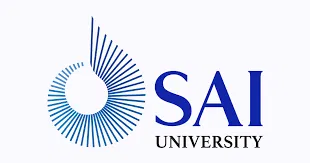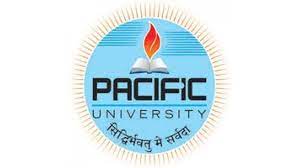Getting admission to the Ph.D. program in design is not an easy task. Fortunately, admission is based on merit and entrance exams. The process is merit-based and competitive. Students who meet the admission requirements can expect to work alongside industry leaders in their field. For more information, contact Carlos Teixeira, the director of the design cluster. Interested students can apply for admission by submitting an application online or by visiting the campus.
A Ph.D. in design is a unique degree, that combines creativity with practical skills. While the career options of a Ph.D. graduate will vary, many of them pursue academic careers in design. While many Ph.D. holders want to become researchers and professors, others prefer traditional positions or work independently in creative fields. A number of these professionals combine teaching and designing careers as a second career. There are numerous benefits to earning a Ph.D. in design.
A Ph.D. in design is a rigorous degree that imparts knowledge of the design process. The program requires extensive research in the design field, and students will choose a topic and build a research-based project around it. A Ph.D. in design graduate can hold a position as a lecturer or professor. There are several skills and benefits to earning a Ph.D. in this degree. You can expect to earn a top-tier salary and a lucrative future.
Ph.D. in Design Eligibility
Candidates who want to take admission in Ph.D. must have a post-graduate degree in Design and its relevant discipline with at least 55% marks from a recognized university and must have passed the national level entrance examination or university level entrance examination. National level entrance exams like UGC NET / UGC CSIR NET / GATE / SLET or University entrance exams consist of written tests and personal interviews.
The Benefits of a Ph.D. in Design
A Ph.D. in design is a doctoral degree that provides the opportunity for research and experimentation in the field of design. This doctoral degree is a logical choice for those who are interested in advancing the design profession. However, there are a number of drawbacks. In this article, we'll discuss the advantages of a doctoral degree in industrial design and discuss how a doctorate in industrial or graphic designers will be useful.
A Ph.D. in design teaches students about the process of design. It requires extensive research in a particular area of design and involves a thesis that is based on that topic. After completing the thesis, the graduate is eligible to work as a lecturer or professor. A Ph.D. in design instills several skills that will be useful in a variety of fields. In particular, it will enable you to apply for positions in academia, such as in art museums and design studios.
The Ph.D. in design is a high-level course that prepares students to employ their creative instincts in designing products and systems. It requires creative thinking and innovative approaches. It gives students a deeper understanding of the Design industry. It will also enhance their ability to apply different approaches and perspectives. A Ph.D. in design will allow you to pursue an independent career in the field. You'll be a valuable asset to your career as a designer and a person in society.
The Career and Job Opportunities of a Ph.D. in Design
In recent years, design has become more interdisciplinary, involving many different business sectors. Graduates with a Ph.D. in design are expected to have a strong background in both creativity and technology and be able to develop innovative ideas and concepts. A career in design will also require research skills and attention to detail. Online PhDs in this field offer an array of possibilities for students to take.
The School of Design at Carnegie Mellon is one of the best-known in the world and has an incredibly vibrant student community. Upon graduation, students can expect to find employment as research scientists or in nonprofit organizations, as well as drive design-led systemic change. Applicants should also expect to gain valuable experience through internships. These positions will help build contacts and boost their portfolios. Because the design world is so small, internships are common. If you're an intern at a major agency, your work may even be recommended to other design firms or universities.
The School of Design at Carnegie Mellon is one of the best schools in the country, with a strong student community. Graduates are prepared to enter a variety of disciplines and become influential in academia or industry. Their research also prepares them to lead design-led systems to change in a variety of organizations, including the government, nonprofits, and academia. In fact, the School of Engineering and Design is one of the top-ranked programs in the world.
The Future Scope of a Ph.D. in Design
A recent article by Davis (2008) in the International Journal of Design attempts to define the role of research and advanced programs in design education. The study points to a number of challenges that college-level programs face in addressing paradigm shifts in design. In particular, the lack of a reliable research database complicates the process of designing the future. For this reason, a doctoral program in the field of design should be able to address these challenges.
A Ph.D. in Design program provides good career prospects. It trains students to understand concepts through visuals and explain them to others. With the resurgence of the design industry in the last several years, the design field has experienced a significant boom. With people becoming more conscious of aesthetics, a Ph.D. in this field is a great way to become more valuable in today's competitive job market.
While the current educational model of graduate design education has its advantages, it does have many shortcomings. For one, only a small percentage of undergraduate design students enroll in master's programs. Furthermore, the educational model borrowed from the studio arts has failed to address the fundamental needs of practice-oriented skills and portfolios. Moreover, the research emphasis of the Ph.D. program must match the research focus of the school.
Ph.D. Research Program duration
The Ph.D. in Design course is a minimum of 3 years and a maximum of 5 min duration. This depends on the university offering the course.
Fees for research program for Design
The average fee for Ph.D. in Design degree is between INR 50000 and INR 500000.
 5 Years
5 Years
 PhD
PhD
 Research
Research

































 back
back